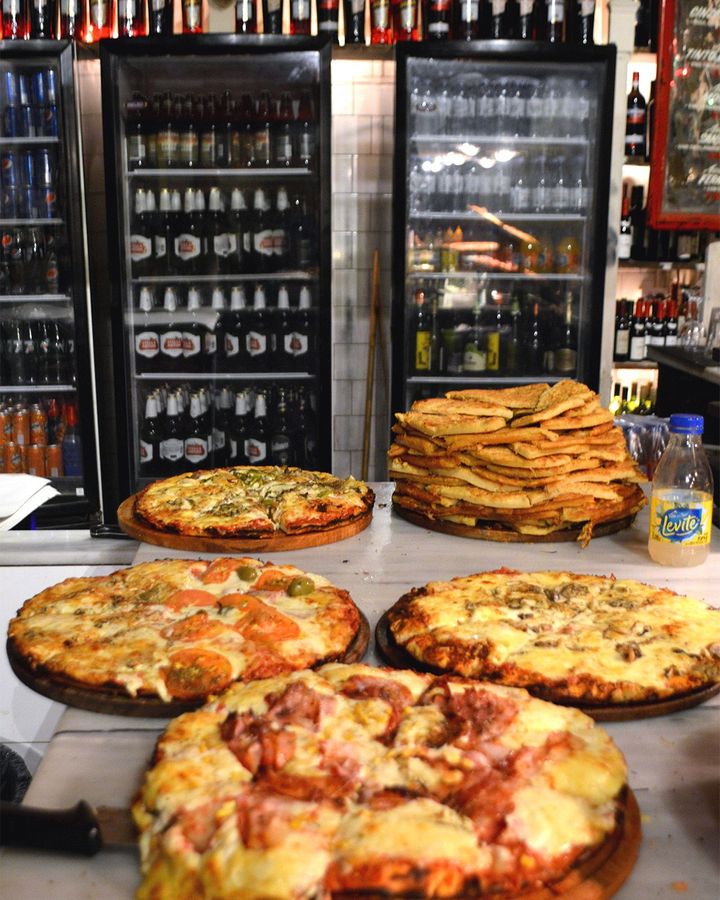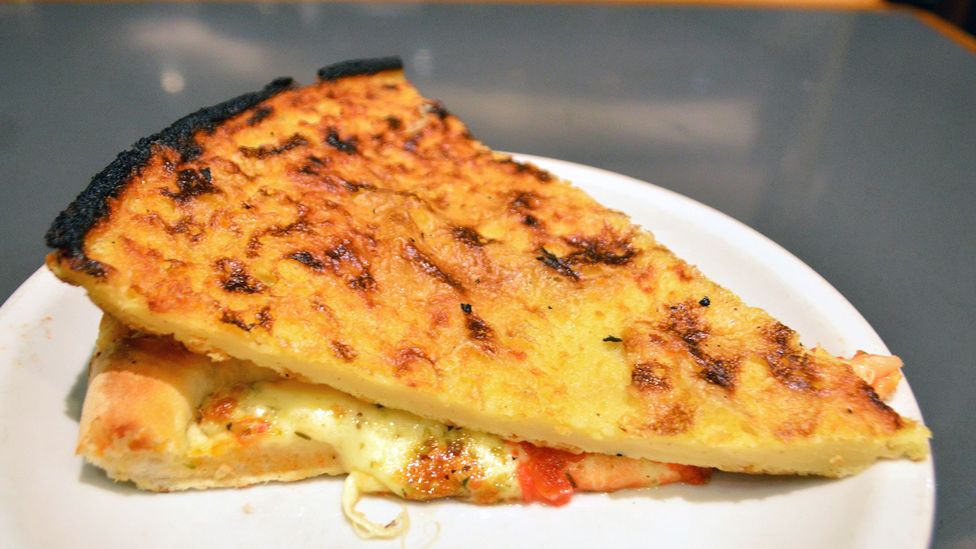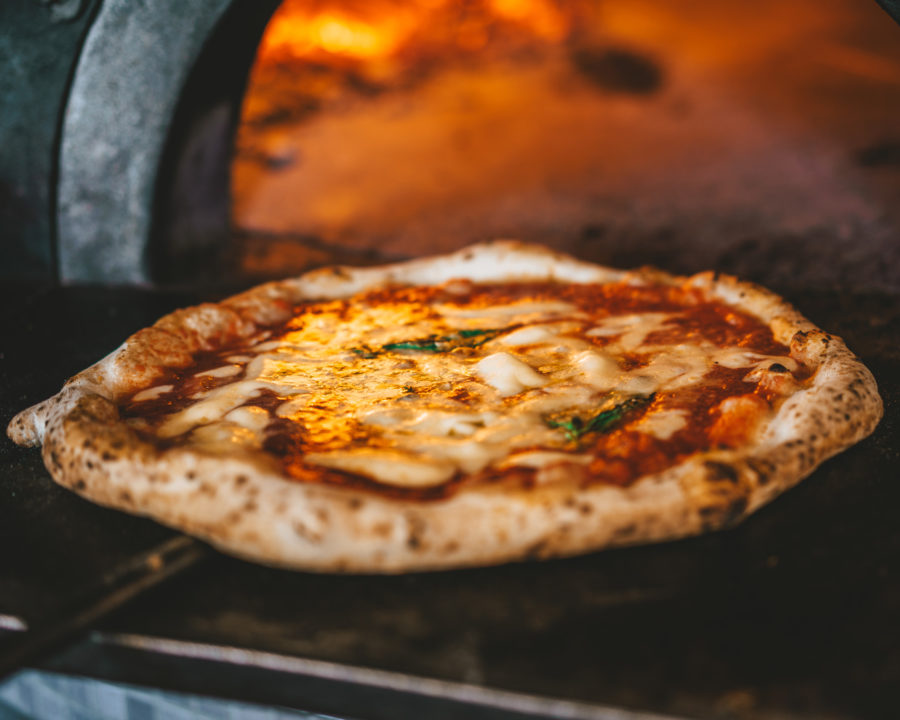A century ago, Italian immigrants in Argentina’s capital gave pizza an unusual new topping: a chickpea pancake known as “fainá”.
The following written content by Amy Booth

At a bustling counter inside Güerrín, a central Buenos Aires pizzeria, a young server in a red-and-white uniform dished out slices. Laid out before him was an abundance of thick, golden pizzas, their toppings a bright blend of green olives, red peppers and crispy melted cheese. The queue reached almost to the door, as he cut the portions with movements as lean and efficient as a juggler, the wedges disappearing in minutes.
Every so often, he turned to a stack of what look like crumbly pieces of pizza base and flicked a portion onto a slice as he served it. The result looked like a pizza sandwich, the mozzarella melting slowly out from between the layers. This extra topping isn’t actually from pizza at all but a thick, baked chickpea pancake called fainá.
Made from just chickpea flour, water, oil, salt and pepper, fainá is not complicated. At one of the restaurant’s enormous ovens, I watched as a chef whisked the ingredients into a dribbly batter, poured it into a flat, round metal pan and carefully pushed it into the oven on a long, metal peel. Over the next five minutes or so, large bubbles pulsated on the surface. In the back corner, a blazing log fire heated the oven to almost 400C. The whole kitchen was sweltering and the aroma of baking suffused the air. When the fainá came out of the oven, it was golden-yellow with dark patches, like a harvest Moon. It would serve 20 to 30 people.
At Güerrín, they go through 600-700 portions of fainá a day, according to Mauricio Nunes Aleixo, the restaurant’s night shift manager. “It’s really classic for porteños, people from Buenos Aires,” he said. “It’s different for people from the other provinces; sometimes they don’t even know what it is.” (Fainá is also eaten with pizza in Uruguay, which is just across the River Plate from Buenos Aires and has close cultural ties to the city.)

Pizza a caballo (horseback pizza) looks like a pizza sandwich, with mozzarella melting out from between the layers (Credit: Amy Booth)
With five ovens, seating for 800 and premises that stretch the depth of an entire city block, Güerrín is a palace to pizza. It’s located on Avenida Corrientes, a theatre district that’s the Argentine capital’s answer to Broadway or the West End. The restaurant has long been frequented by people from all walks of life, from glamorous thespians to hippy backpackers. Previous customers even include former presidents Raúl Alfonsín and Mauricio Macri, according to Nunes Aleixo. But no matter who’s eating it, porteño pizza is decidedly humble in origin.
Nicknamed pizza a caballo (horseback pizza), pizza topped with fainá likely developed in working-class Italian migrant barrios such as La Boca, probably in the early 20th Century according to Carina Perticone, a semiologist and anthropologist researching literary representations of local food at Argentina’s Universidad Nacional de las Artes.
The recipe for fainá arrived with Genovese migrants, who came from northern Italy to Buenos Aires in the 19th Century. In Italian, the chickpea pancake is known as farinata (the word farina means “flour”), and the name “fainá” stems from the Genovese dialect. By the turn of the century, fainá could be found in the stores and street stands of the La Boca, Mercado de Abasto and Paseo de Julio districts, according to Perticone. By 1926, a baker nicknamed “Tuñín” was selling fainá and fugazza, another pizza-like favourite made of dough and onions, to fans heading to games at the Boca Juniors football club in the dockside barrio of La Boca.
“It was like a place to stop by, to eat standing up. But all the famous Boca football figures passed through there; it was very popular,” Perticone said. In immigrant barrios with large Italian populations, fainá was “the original Buenos Aires street food”.
We’ll probably never know for sure why porteños started eating fainá on top of their pizza. Perticone suggests it might have been a practical way for hurried workers to eat on the go. Chickpeas were a cheap source of protein for the working class who didn’t always have access to meat, added Francesca Capelli, a sociolinguist at the Salvador University’s School of Modern Languages research institute. Read more from BBC.






